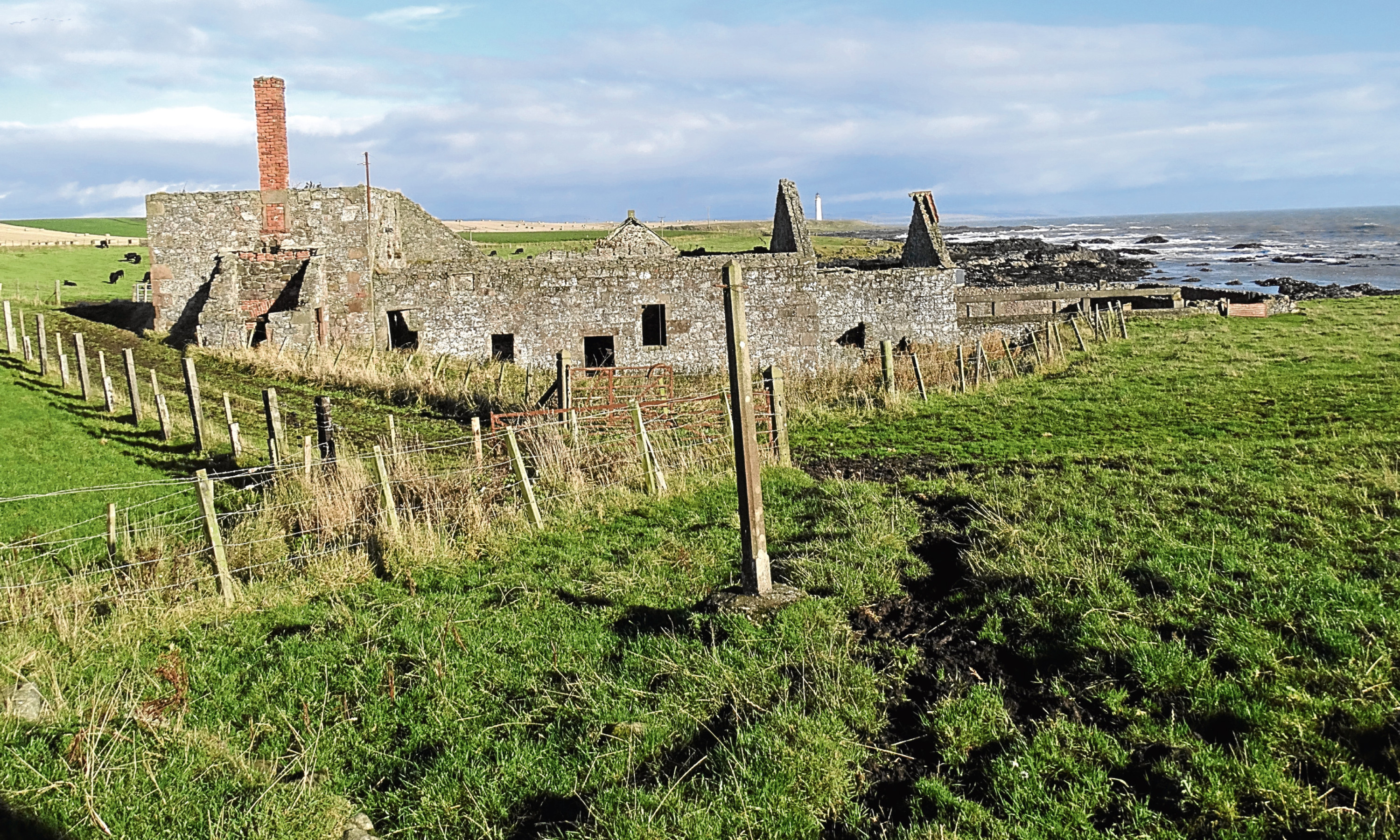There are moments when I need to be near the sea. Last Monday I couldn’t resist its siren call any longer.
The morning didn’t look too promising but I’ve noticed that often the weather on the coast is the opposite of the weather inland.
I took my chances and, bundling Inka into the car, drove to Mains of Usan Farm below Ferryden, the former fishing village across the mouth of the River South Esk from the port of Montrose.
It had been ages since I last walked at Usan but it is a place that holds many memories.
When my father came to Montrose as a solicitor in 1938 he and my mother rented the dower house for Usan House, known then as Usan Cottage but now as Inverusan.
The first six months of my life were spent at Usan Cottage but you’ll not be surprised that I have no memories of that. Due to wartime petrol rationing, my parents moved into Montrose.
They say the name Usan is a diminution of Ulysseshaven. There’s a tradition that the fisher village of Fishtown of Usan a mile down the coast, from which the farm takes its name, was originally a Danish Viking settlement.
Fishwives from the Fishtown daily travelled the Royal Cadgers Road to Forfar Castle to sell their wares to the kings of Scotland when they were in residence.
It was a fresh autumn morning when we got there, no sign of the dark clouds I’d left behind. Geese, flying low, were beating into the tugging, gusty wind probably on the lookout for a stubble field to settle on and graze.
I chatted to two fishermen from Sunderland who have been coming up here for years for the rock fishing. I wished them tight lines.
Almost on the seashore are the remains of what my father told me was an 18th Century flax mill. In the field behind is the dam that provided the head of water to power it.
Flax was an important crop and widely grown several hundred years ago as linen was woven from its fibres.
Standing off from Scurdieness lighthouse were two cargo ships and two oil support vessels waiting for the pilot to guide them into the tricky entrance to the river mouth of the South Esk and up to the port at Montrose.
The sea was choppy and the pilot has to leap like a gazelle from the pilot boat on to a ladder on the side of the ship to be piloted as the two vessels sail side by side – so there’s little room for mistakes.
Some years ago I accompanied Captain John West, senior pilot at Montrose Port Authority, as he piloted a Dutch ship, Lys Chris, into the port. It was an interesting experience as I saw Montrose and Ferryden from a quite different perspective high up in the wheelhouse.
My father knew the Scurdieness lighthouse keepers and when I was a youngster we used to go out to the lighthouse and climbed up, what seemed an endless number of stairs for small legs, to the lamp room to watch the keepers light the lantern that blinks away throughout the night, warning passing mariners of the rocky Angus coast.
I was allowed out on to the platform that runs round the top of the tower and had a wonderful 360-degree panoramic view of the whole countryside.
You can’t do any of that now even if you were allowed up lighthouses – which you are not – because all of them are automated these days and there are no lighthouse keepers.
A hare loped off ahead of us as we walked though a stubble field. Fifty years ago they were much more plentiful. I once saw one, chased by dogs, jump off the rocks into the sea and swim for safety to a rocky islet.
The stretch of coast here is famed for agates and it was common to see serious men with wee hammers, bent double, banging away at the rocks hunting for the semi-precious stones which are so much associated with traditional Scottish jewellery.
We walked along the shoreline towards the Fishtown. As a laddie in short breeks I spent many happy hours, armed with a fishing net, scrambling about the rock pools catching sticklebacks and crabs.
I found a sheltered spot and sat down out of the wind. The sun was warm on my face. I was content to lose myself in the fractured beat of the waves breaking on the shore.
There’s an elementary patience about the sea – it has all the time in the world. The tide ebbs and flows in its own ineluctable cycle and nothing man can do can interrupt the cadence of its rhythm.
I had to keep my eye on Inka to stop him drinking sea water. He never learns that dogs and seawater don’t mix and that he’ll just bring it up again.
He had a marvellous walk and when we got home he had a monstrous drink of sweet water from his water bowl and collapsed into his bed.
